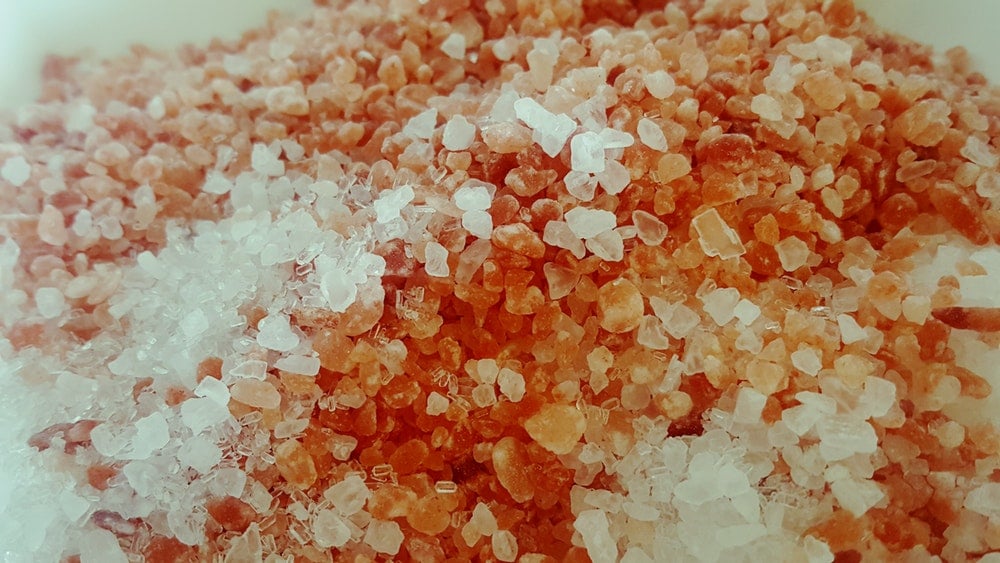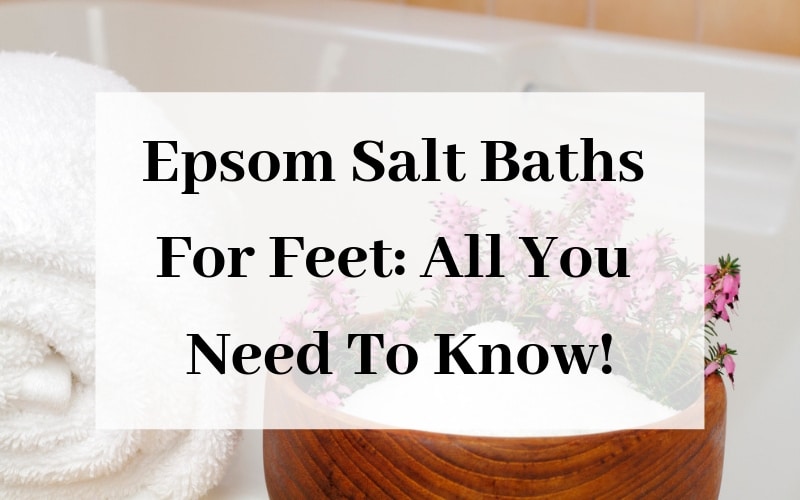Epsom salts have been used for hundreds of years to treat a variety of ailments. One of their most popular uses is in an Epsom salt foot bath to relieve foot pain, soften skin and aid relaxation. Here’s all you need to know about Epsom salt baths for your feet.
What are Epsom salts?
Like most people, you’ve probably heard about Epsom salts and the benefits of using them in a foot bath, but do you know what they actually are? Although they’re called “salts”, Epsom salts are in fact a mineral compound, containing sulfate and magnesium. Epsom is the name of the English town where they were first discovered.

Benefits of using Epsom salts
Epsom salts have many reputed benefits, from easing tired, aching muscles to helping skin to heal. Here are some of the main benefits associated with the use of Epsom salts in a foot bath.
Destress
First and foremost, a foot bath with Epsom salts can help you to de-stress and relax. Even if your feet are not especially sore and have no particular problems, you may find that an Epsom salt foot bath leaves you feeling relaxed. You could also add some essential oils to your Epsom salt foot bath to aid with relaxation.
Too often our feet are overlooked when it comes down to relaxing people tend to think of full body massages. An Epsom foot bath is a simple, inexpensive ritual you can perform alone, that can help you to unwind.
Soothe tired feet
Whether you’ve just run a semi-marathon or spent the entire day on your feet, an Epsom salt foot bath can help relieve tired, aching feet. Researchers believe that the magnesium contained within Epsom salts may also help to relieve foot cramps. The combination of warm water and Epsom salts reduces inflammation and helps to relax your muscles.
Removal of splinters
Thorns, stings, splinters or shards of glass. Whatever you have stuck in your foot that is proving difficult to remove, an Epsom salt foot bathe can help. Epsom salt foot baths can reduce swelling, soften the skin and may provide antibacterial properties, making it easier to remove that stubborn splinter.
Treat dry or irritated skin
Soaking in Epsom salts can soften your skin and provide welcome relief for irritated skin. An Epsom salt foot bath can help to soften callouses and reduce inflammation. If you are looking to smooth rough skin before you wear your summer sandals, an Epsom foot bath can help enormously when used prior to exfoliation.
Treat ingrown toenails
An Epsom salt foot bath can help to relieve the pain of an ingrown toenail. Thanks to its antibacterial, anti-inflammatory and skin softening properties, after an Epsom salt foot bath, you should be able to make progress with treating your ingrown toenail, as well as experiencing some welcome pain relief. Be sure to keep your water very warm in your foot bath and when you remove your feet, try to gently push back the skin away from the nail’s edge. Doing so after an Epsom salt footbath will be much easier as your skin will be more flexible and you will feel more relaxed.
Take this one step at a time and slowly try to make progress every day until your ingrown toenail is more manageable. Once you’ve reached this point, you can use twice weekly maintenance Epsom salt foot baths to keep on top of the situation.
Ease arthritis foot pain
While there is little in the way of scientific evidence to prove its efficacy on arthritis, Epsom salt footbaths are often used by arthritis sufferers to help to alleviate their foot pain. In the absence of thorough scientific studies relating to the absorption of magnesium from Epsom salts, we can still say with some certainty that an Epsom salt foot bath enhances relaxation which in turn eases pressure on the joints, helping to alleviate the pain.

How do Epsom salts work?
When you bathe your feet in an Epsom salt foot bath, the salts break down into magnesium. One theory is that this magnesium in the water of your foot bath is absorbed by your body through the skin. Magnesium has been shown to block pain receptors, boost the immune system and help strengthen bones, among other benefits.
However, there have been no conclusive scientific studies that underline the efficacy of Epsom salts. What we do know, however, is that they have been successfully used for hundreds of years to treat a range of foot problems.
Taking a warm Epsom salt foot bath also provides a sense of well-being and could help you to unwind. The warm temperature of the water encourages your muscles to relax and you will naturally abandon any cramped position that your feet had adopted throughout the day due to ill-fitting shoes, pressure or simply tiredness.
Adding Epsom salts to your foot bath can help to increase your sensation of relaxation. They will also help to reduce any inflammation. Even if you don’t have any specific foot problems, after a busy day spent rushing about on your feet, their anti-inflammatory qualities will help to relieve your tired feet.
How to bathe your feet with Epsom salts.
For an effective Epsom salts foot bath, you’ll need to use around two cups of Epsom salts per gallon of water, if you use too little, you won’t feel the full benefits of your foot bath.
Run water so it is very warm, then fill up your container in which you’re planning on soaking your feet with the Epsom salts already inside. Running very warm water over the salts will help to dissolve them fully and rapidly.
Soak your feet straight away, while the water is still warm for maximum efficacy. You can leave your feet in to soak for around 20 minutes, after 30 minutes, you’re unlikely to have any increased benefits. Warm water helps to relieve pain and opens your pores for maximum absorption. It is also relaxing, so once your water has cooled right down, you’re probably done. For this reason, you may want to take an Epsom foot bath after your shower or bath in a comfortable, heated room. Don’t forget to place a towel nearby so you don’t wet the surrounding area when removing your feet. You may also read how to use bath salts in the shower.
How often should I use them?
You can use Epsom salts several times per week, depending upon your needs. In general, people tend to use them on a regular basis 2-3 times per week. If you have a painful ingrown toenail or a splinter, however, you may wish to use them every day over the course of a few days until you manage to resolve the problem.
Summary
Epsom salt foot baths can provide welcome relief for anyone who is suffering from tired, aching feet. They can also help with more specific problems, such as ingrown toenails or splinters. Whether you use an Epsom salt foot bath to relax or to soften skin for summer-ready feet, it is a popular, inexpensive treatment that can be used by the whole family.
While there is little scientific proof of how Epsom salt foot baths actually work, they have been safely used for hundreds of years, providing welcome pain relief and relaxation. So the next time you’ve had a busy day on your feet and you need to destress, try out this simple, back-to-basics remedy that will get you back on your feet in no time. You may also want to read on the benefits of Epsom Salt and lavender in the bath.

